I have from time to time mentioned my late father in my blog, but I have never put together the story of his career.
I have the time to do so now because the Covid 19 situation has led to the cancellation of 4 cruises that Jane and I were due to take in 2020 and 2021. And my 3+ year battle with the NHS for Continuing Health Care for Jane has been successfully concluded after an appeal to NHS England – that means more carers for Jane and a bit more time for me.
Like so many of my fathers generation, they talked very little about their war service and it is only in recent years that I have been able to piece together his career at sea. The main document that I have been able to work from is a copy of a handwritten record detailing the ships he was assigned to, the dates he was at sea and the dates that he was at home on leave. It starts on 18 June 1940 when he joined Cunard through to his retirement in May 1972.
Father went to Winteringham School in Grimsby, Lincolnshire, England and later the Grimsby Nautical College. I am not clear about when he decided to go to sea. His mother died when he was 14 and he joined his first ship 2 years later when he was 16. On his mother’s side of the family, one of his ancestors, Arthur Morgan, was a trawler skipper. Perhaps that influenced him, but of course Grimsby was, at the time that he was growing up, a flourishing fishing port.
Father was born on 6 April 1914 in Grimsby. His father was a butcher with a traditional butchers shop in the Bull Ring in the centre of Grimsby. Father was the youngest of 4 children. Tom, the eldest, eventually took over the butchers shop on his father’s retirement. Next was Gertrude (my Aunt Gert). She married another butcher, Bill Storr, who had his butcher’s shop in North Thoresby, a village south of Grimsby. Then came Edith (my Aunt Ede). She was a renowned pianist and taught piano from the house at 102 Bargate, Grimsby that she had inherited from her father (my Grandfather Frederick Henry Smith). And the 4th and youngest child was my father, George Edward Smith.
On 17 September 1930 he joined his first ship, the Westmoreland
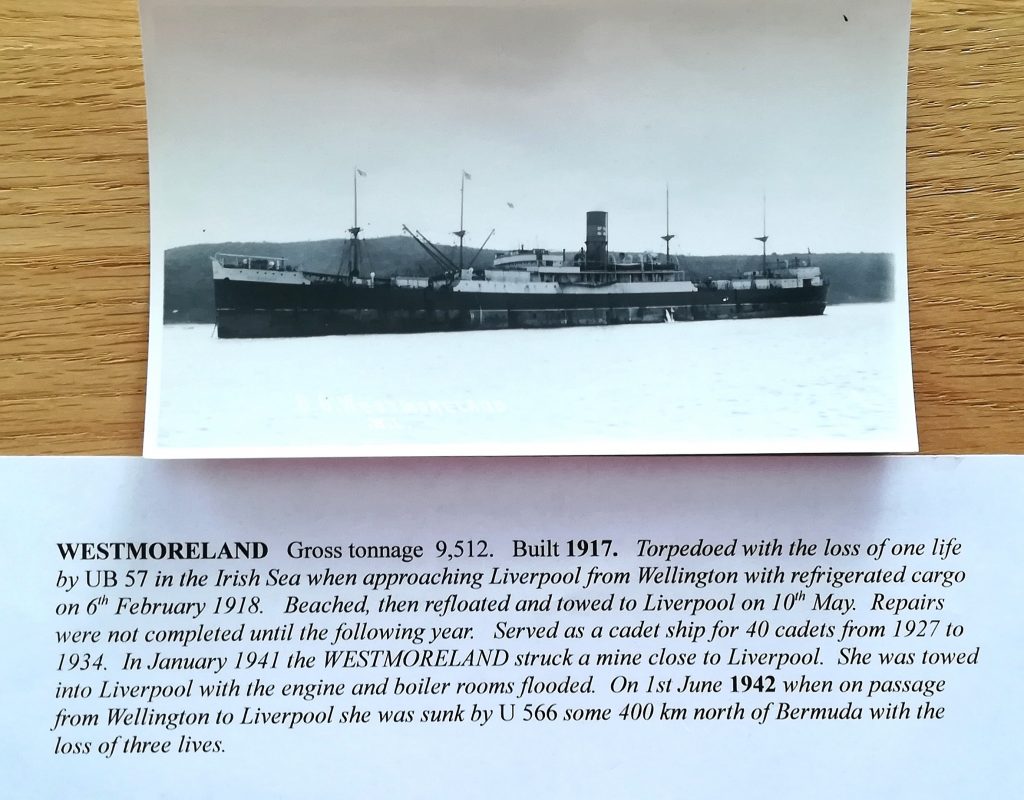
At that time the NZ Shipping Co had 3 ships designated as training ships and each carried 20 or more apprentices or cadets as they were called. They were given a structured programme of training and in effect they took over the role of deck crew. The ships sailed between New Zealand and England and back again.
After a year aboard the Westmoreland, father joined the Devon for the next 2 years
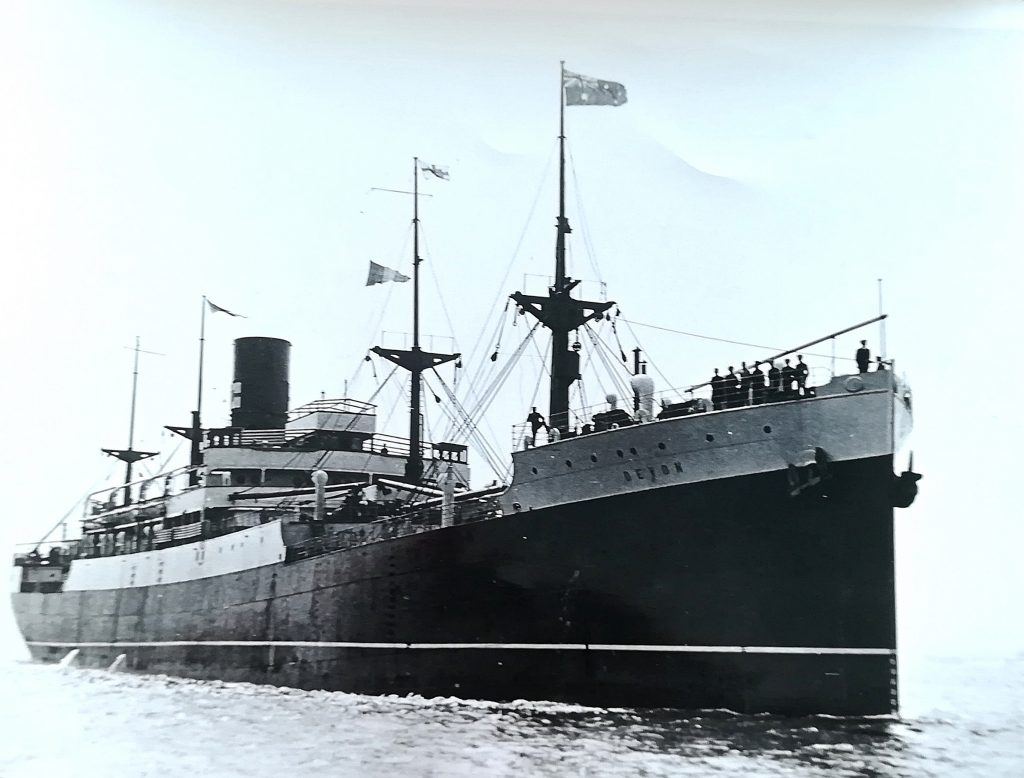
The images above and below are of the Devon and the image below is from the Alexander Turnbull Library, Wellington.
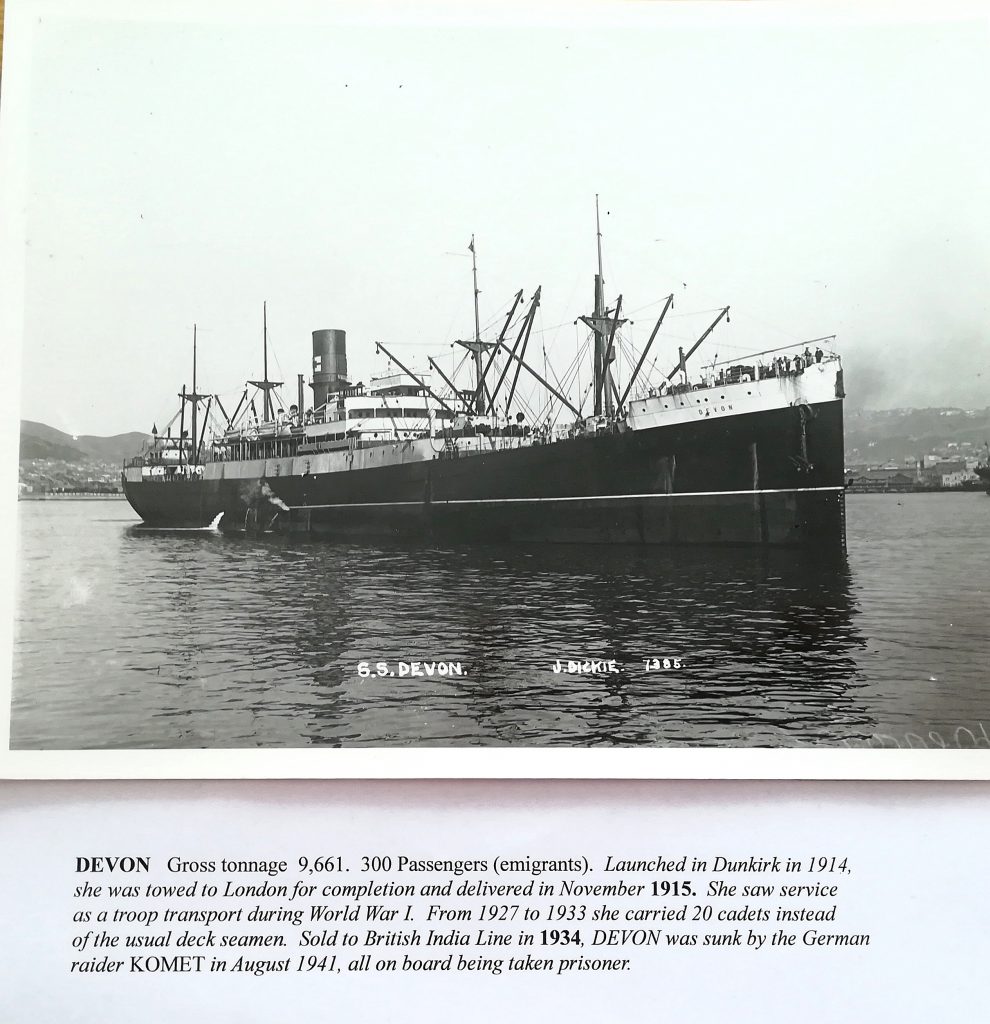
On 30 September 1933 father joined Turakina
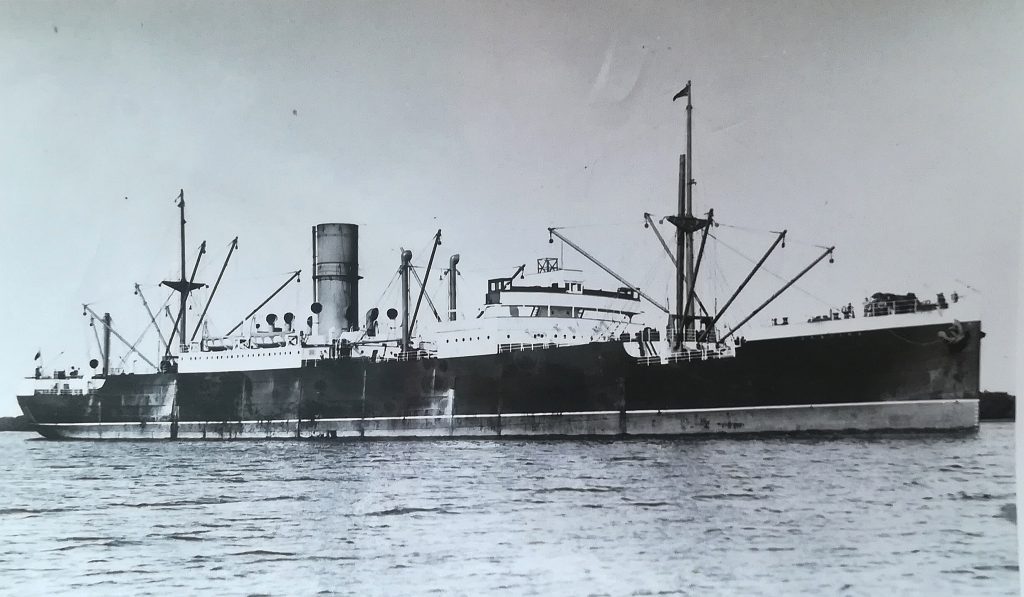
And after 6 months he moved to Northumberland – his fourth and last NZ Shipping cadet ship.
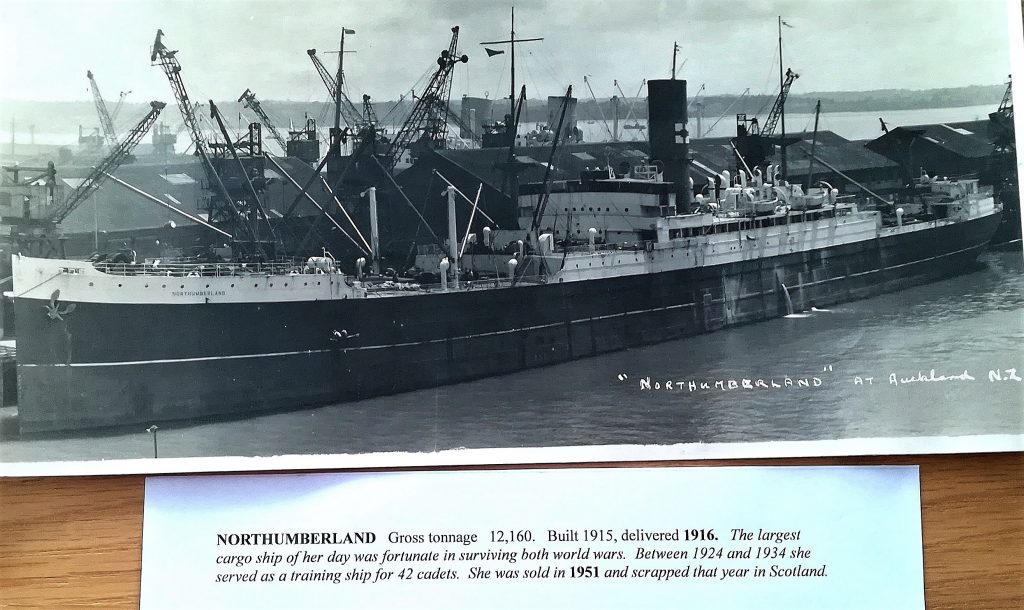
After passing his Second Mates ticket he joined the United Baltic Shipping Company and sailed on SS Baltara and SS Balteaco until he gained his Masters ticket.
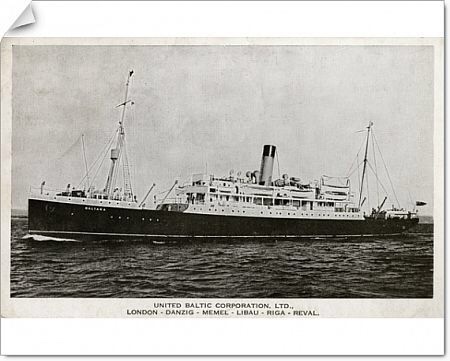
His ambition was to move to larger ships and he applied to 8 shipping companies seeking employment as a deck officer. Cunard apparently replied by return, offering him an interview and a rail ticket. That was the deciding factor and he joined Cunard on 18 June 1940.
Amongst father’s papers I have found a list, written by him, of the ships he had sailed aboard, and after the United Baltic ships there was another entry – SS Empire Seaman. I had not heard of her before, but I discovered that she was originally SS Morea, a German steel steamship captured west of Cape Finisterre early in the war on 12 February 1940. She was taken as a prize by the Ministry of Shipping.
Father must have sailed on her for only a short period after leaving United Baltic and before joining Cunard. SS Empire Seaman’s life under a British flag was a short one because on 30 June 1940, 2 weeks after father had joined Cunard, Empire Seaman was sunk as a blockship in Scapa Flow.
Scapa Flow was a major British naval base in both World Wars but the strong defences built in the First World War had fallen into disrepair and in 1939 Uboats attacked and sank HMS Royal Oak. Days later the Luftwaffe attacked and badly damaged HMS Iron Duke. Following that, new block ships including SS Empire Seaman were sunk to bolster defences. Churchill also ordered the construction of causeways to block the Eastern approaches.
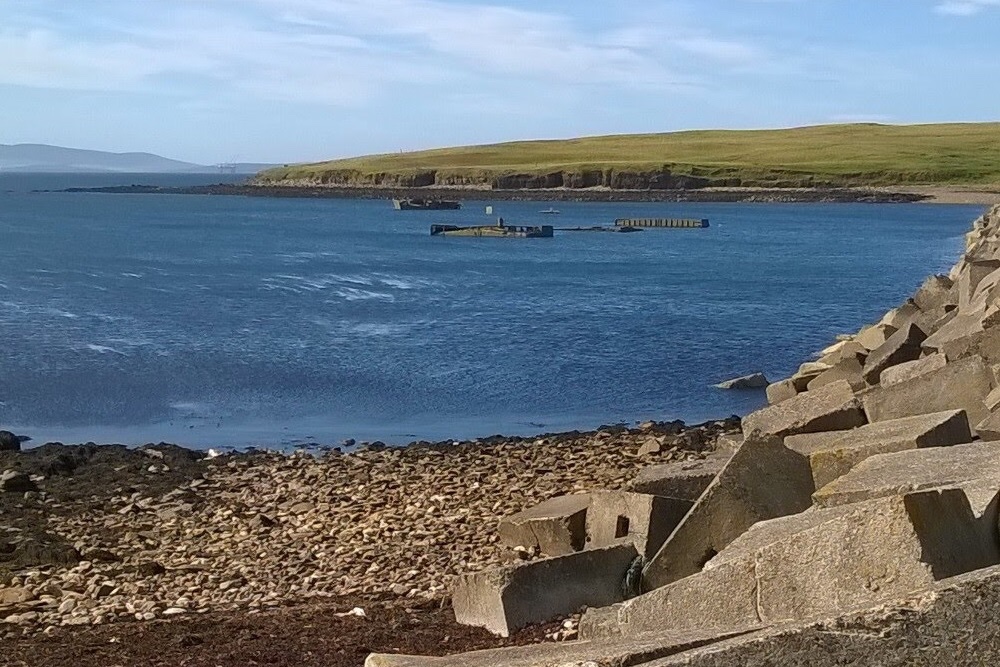
Three days after joining Cunard, father was assigned to RMS Franconia. This was the Franconia that had been launched in December 1923 and was eventually retired in December 1956 (and not to be muddled with the Franconia that father commanded at the end of his career before retirement)
RMS Franconia had been requisitioned as a troopship in September 1939. Five days before father joined her, she was damaged by near misses from German bombs and was escorted to Liverpool for repairs. It was in Liverpool that father joined the ship as 3rd officer.
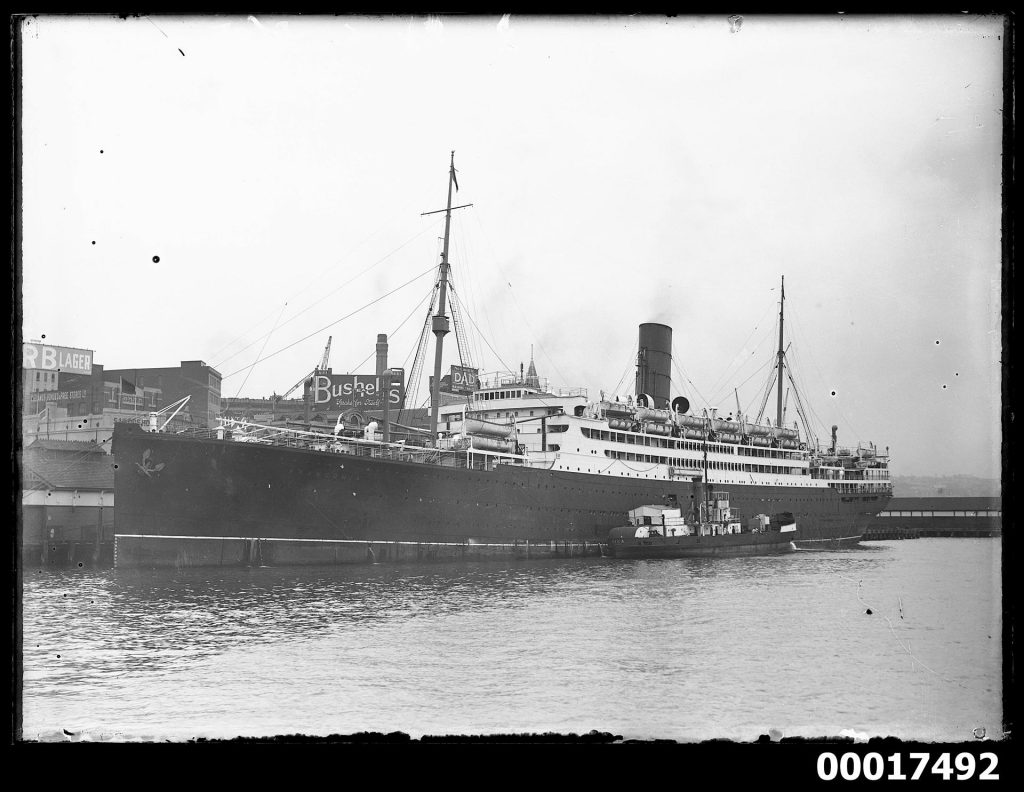
It was on 21 June 1940 that his Cunard career commenced. Through 1940 and 1941 Franconia was a troopship. She took troops to India and in 1942 after father had been promoted to Senior First Officer, the Madagascar issue arose. Franconia was one of the 3 troop ships involved in the successful landings.
Incidentally in 1945 the Franconia was the headquarter ship for Winston Churchill and the British delegation at the Yalta Conference. Jane and I visited Yalta on 21 September 2012.
This is the table at which the delegation sat.
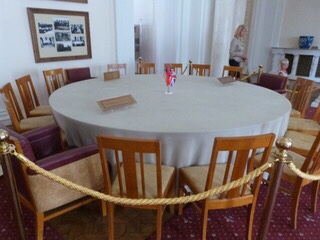
In November 1942 the Franconia took part in Operation Torch in North Africa. Father was then promoted to First Officer and he moved to RMS Ascania on 7 February 1943 and he served on that ship for the next 20 months. She was modified into a Landing Ship Infantry and took part in the invasion of Sicily in 1943 and the Anzio landings and the landings in the south of France in 1944.
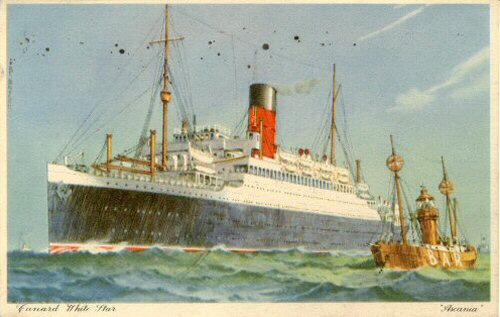
In October 1944 he was given 2 months leave and then, one week before Christmas 1944, he joined RMS Queen Mary as Senior First Officer.
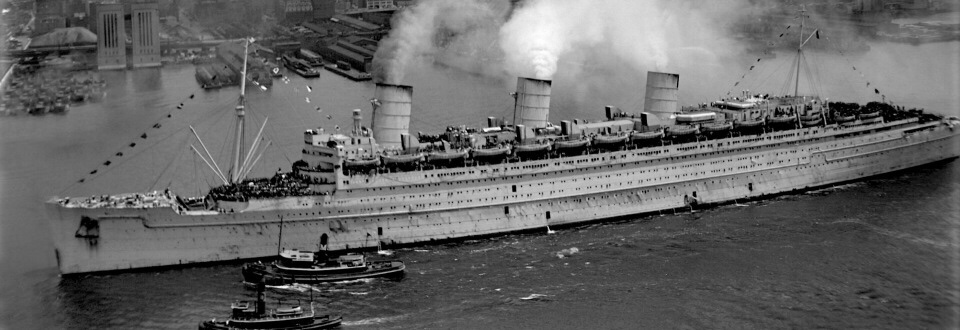
Between May 1944 and April 1945 the Queen Mary and the Queen Elizabeth carried more than 250,000 troops to Europe. There was a vital need for replacements as the Allies were facing a manpower crisis towards the end of 1944.
On one voyage Queen Mary carried 15,740 troops as well as her crew of 950, which was the greatest number of people carried on a single ship at one time. That was exceptional but on every subsequent voyage until the end of March 1945 she carried at least 12,000 people.
Queen Mary and Queen Elizabeth made their last eastern crossings laden with troops in March 1945. Then came the process of returning the American GI’s to their homeland which started on 10 June 1945 when Queen Mary sailed from Gourock with 14,750 GI’s aboard.
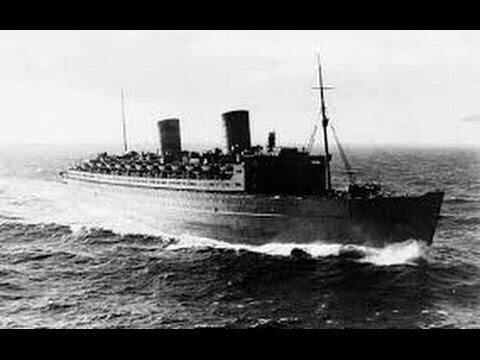
On Queen Mary’s return to Southampton on 5 July 1945, father was given leave to be at home for my birth in Cleethorpes, Lincolnshire on the 30 July 1945!
On 22 August 1945 father joined Queen Elizabeth as Senior First Officer and he remained with QE for the next 5 years.
As well as returning GI’s and Canadian soldiers, both QM and QE were also taking home to North America thousands of wounded personnel. On the eastern runs they brought back expats and also thousands of children who had been evacuated to Canada in 1940.
Arrivals in New York and in Britain were magnificent events with hundreds of small boats and vast crowds welcoming home the ships and the returning folk.
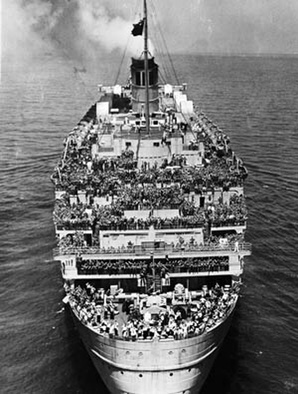
In February 1946 QE was returned to Cunard and over the next few months she was transformed from troopship to the luxury liner that she should have been in 1940.

Queen Elizabeth sailed on her maiden voyage as a passenger liner on 16 October 1946. The ship was fully booked. She settled in to the transatlantic routine and after Queen Mary had been handed back to Cunard and had been returned to her former glory the two liners operated the weekly schedule between Southampton and New York.
In 1946 my family moved from Grimsby to Southampton so that on the 2 days that the QE was in Southampton every fortnight, father could be at home with mother and Elizabeth and me.
That arrangement continued until November 1950 when father moved from the QE to the Mauretania. He sailed on her as Senior First Officer for a year. In the summer Mauretanla acted as a relief ship for the Queens on the transatlantic runs when one of them was undergoing maintenance. In the winter Mauretania was cruising out of New York.
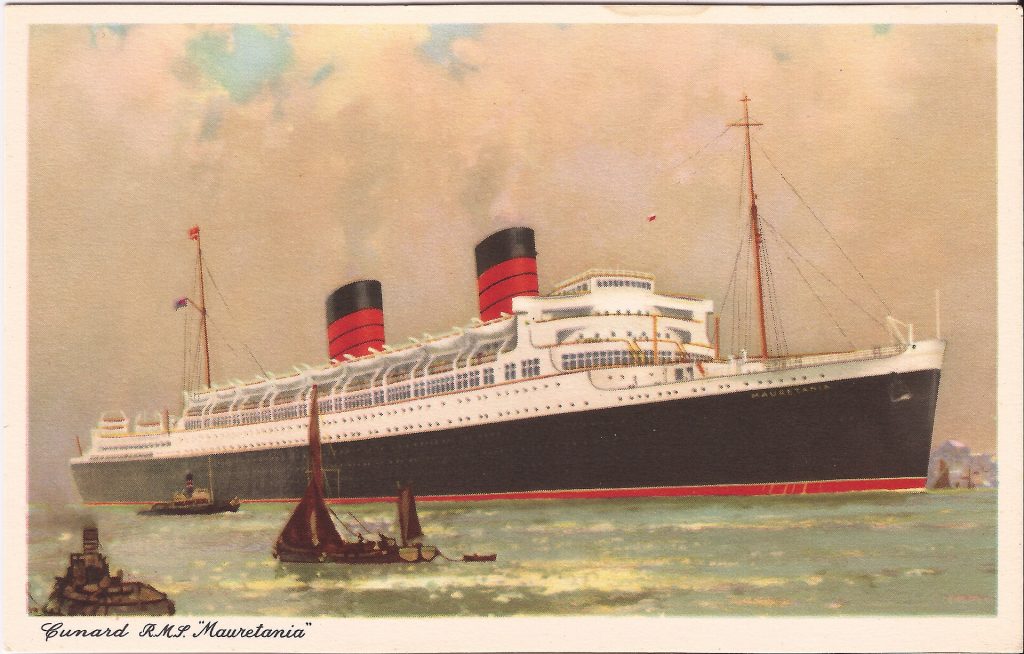
During 1951 and 1952 he had spells on Ascania, Media and Scythia before moving back to QE in July 1952 on the transatlantic run.
On the day of HM Queen Elizabeth’s coronation, 2 June 1953, father was promoted to Chief Officer and joined the Caronia, affectionately known as the Green Goddess. HM Queen had christened the ship 6 years earlier when she was Princess Elizabeth.
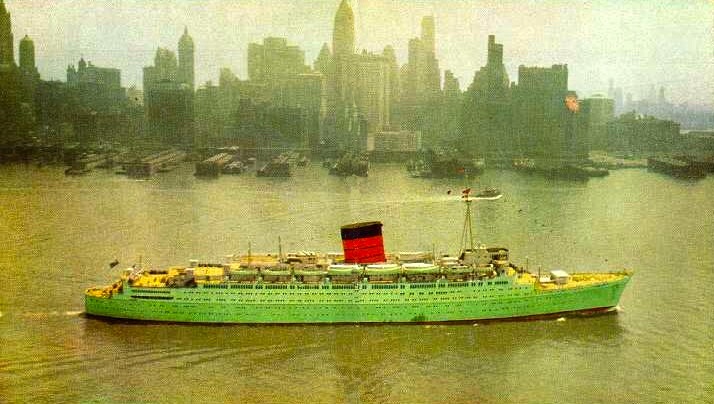
Caronia had left New York on her Coronation Cruise on 5 May 1953 with 579 passengers aboard. She sailed to Funchal in Madeira and then Casablanca, Malaga, Lisbon and then a clockwise lap round the UK arriving in Southampton on 1 June.
Caronia was used as a floating hotel for the next two nights and passengers were taken on tours to Winchester and Salisbury and then on Coronation Day 2 June 1953 they were taken by Pullman to a special stand at Hyde Park Corner to view the coronation procession.
Although father officially joined the ship on 2 June, presumably the Captain gave him the day off because I can remember that we all spent the day at the home of friends of my parents who had a television.
Caronia then made 2 transatlantic voyages before departing on a North Cape cruise from New York. It is clear that Caronia was considered to be the height of luxury cruise ships at the time. There was enormous demand for the most expensive cabins. The wealthy were anxious to travel on her and she soon became a huge dollar earner for Cunard.
The North Cape cruise took the ship from NY to Iceland, the North Cape, then down the coast of Norway across to Scotland and then anti clockwise round Great Britain to Southampton.
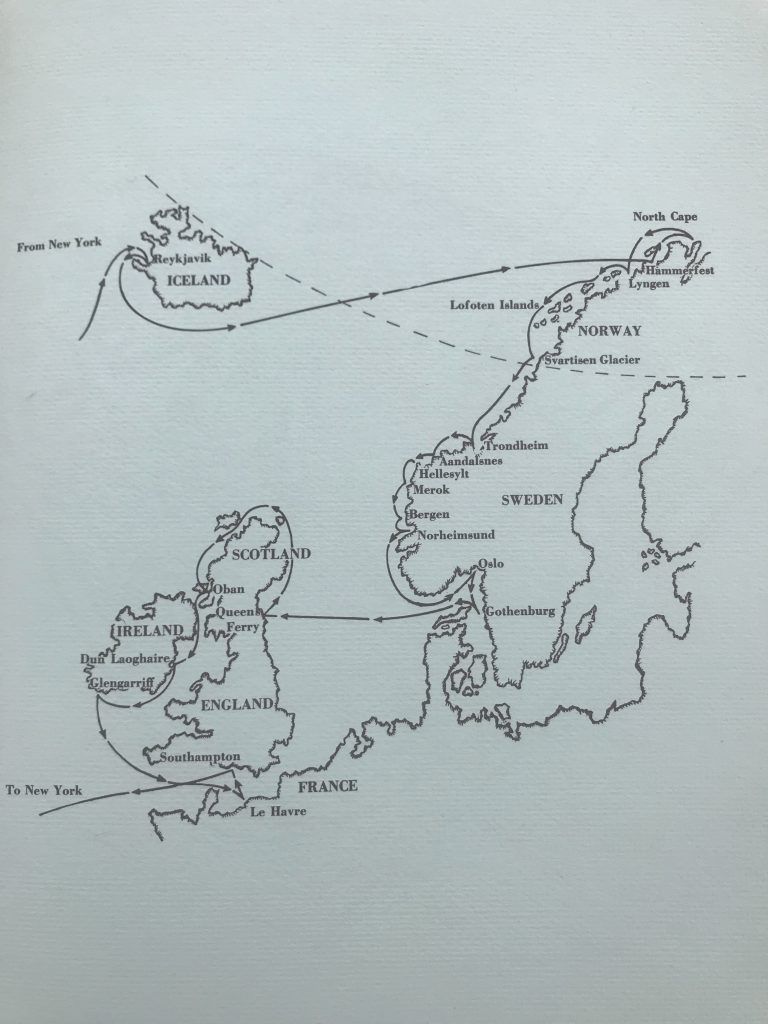
Caronia arrived in Southampton on 3 August and remained in port until her departure to NY 5 days later. Father must have grabbed those 5 days at home with us before what was a long spell away from home and some magic ports and experiences.
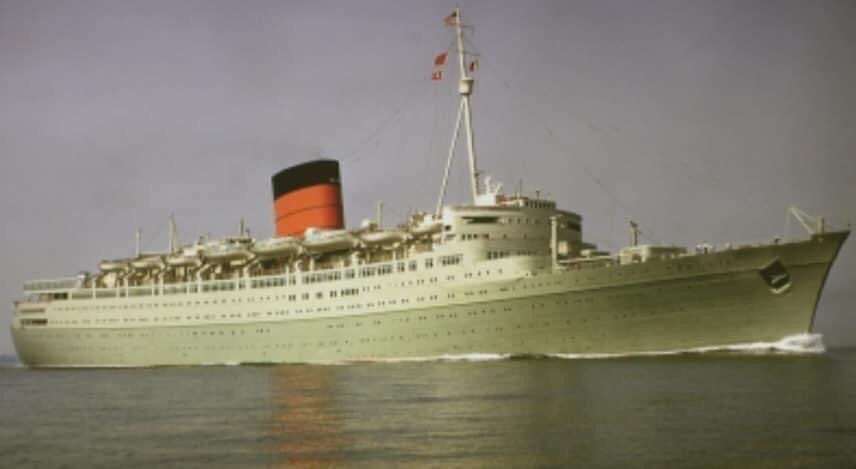
Caronia was building up for the 1954 World Cruise named the Japan and South Pacific Cruise leaving NY on 9 February 1954. Cunard had decided on something different. This was the itinerary.

Two transits of the Panama Canal, calls at Easter Island and Pitcairn Island, Samoa, Tonga, New Zealand, Australia, Bali, Singapore, Manila, Japan, Hawaii, California. Acapulco and back to New York.
Clearly it was a wonderful itinerary and it was not surprising that exactly 60 years later in 2014 Cunard devised a similar World Voyage for Queen Victoria. Jane and I were aboard, leaving Southampton in January 2014 and returning 116 days later at the end of April 2014.
When I booked the 2014 World Voyage I knew that Pitcairn Island was
included in the itinerary and I knew that father had been there when I was a boy, but I had not realised how similar the itineraries were.
In 1954, the Caronia World Voyage started in New York, sailed through the Caribbean to the Panama Canal and after her transit she headed south to Callao in Peru. She then headed west across the Pacific to Easter Island and Pitcairn.
60 years later, in 2014, our Queen Victoria World Voyage started in our hometown of Southampton and then took us across the Atlantic to Florida, south to Barbados and then down the east coast of S America, round Cape Horn (yes we did – read my blog!) and then north to Valparaiso. After that we followed a course similar to the Caronia’s voyage 60 years earlier to Easter Island and Pitcairn.
Interestingly, some years ago, I bought on eBay a book issued by Cunard and Thos Cook as a momento of Caronia’s 1954 voyage. It is signed by the illustrators and is number 28 of 480 issued.
These are illustrations of the Panama Canal and Japan!

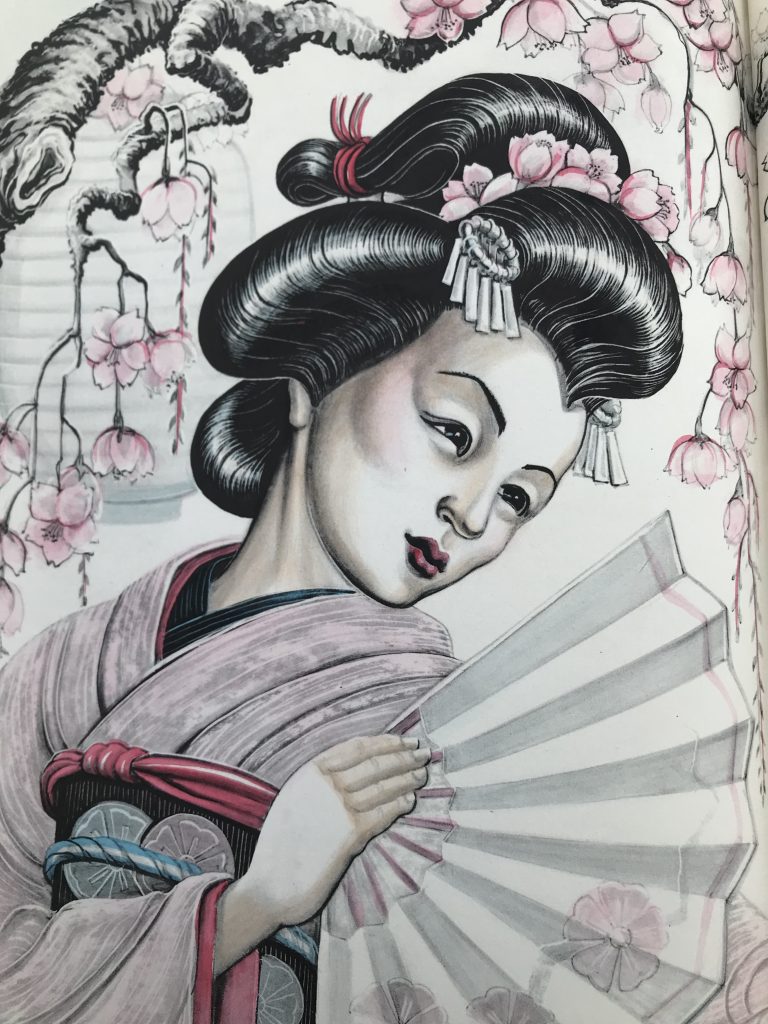
Easter Island was reached by the Caronia on 6 February 1954. On Queen Victoria we arrived there on 13 February 2014 exactly 60 years and one week later!
On neither occasion were passengers allowed ashore on Easter Island, but in 1954 the islanders were allowed aboard to trade and give an exhibition of dancing. Interestingly the Caronia’s passenger leaflet added “The islanders are known to be desirous of travelling through the world as stowaways, therefore a careful check system will be in force and passengers should not request islanders to go to their cabins”!
On Queen Victoria, islanders did not come out to the ship. We sailed round the island but the islanders appeared to show no interest in us or in the ship!
Caronia was then at sea for 2 days arriving at Pitcairn on 9 February 1954. QV matched the timing 60 years and one week later!
Back in 1954 there were 120 people living on Pitcairn. It was down to 50 in 2014. The format for the visit was the same and the islanders came aboard, selling their memorabilia and singing their local songs and hymns. Back in 1954 the passengers raised US$40,000 for a new roof for the Pitcairn Island church. I’m not sure that the QV passengers were quite as generous.
If you would like to read more about Pitcairn and the 2014 QV voyage please click on February 2014 on my blog.
After Caronia returned to the US on 2 May 1954 she stayed in NY for a week before embarking on her European Spring Cruise, which brought father back to Southampton for leave at the end of that voyage. I remember his return very well because he had an extra suitcase full of presents and momentos that he had bought or been given and the distribution to my sister Liz and me and mother took a couple of days!
After a months leave, father joined Ascania and then Scythia and then Samaria before joining Queen Elizabeth again in April 1955. He remained with QE until the end of that year when he was assigned to the job of “standing by” the construction of a new Cunarder – the Carinthia.
I am not clear what was involved, but I believe that his role included ensuring that navigational equipment was correctly positioned in the bridge. I am sure that there were many more aspects of her construction with which he was involved. He was with the build on the Clyde from December 1955 until June 1956.
We spent the Easter school holidays in 1956 in Scotland. We stayed in a B&B in Helensburgh and father would drive to the Clyde each day. Liz and I spent our days fishing on the pier and at weekends we toured the lochs. Glencoe was the highlight for me because the visit entitled me to some bonus points from my history teacher, Mr Wilson, at Oakmount School.
Cunard had decided to build new ships for the Canadian service. Two initially and later two more were built. Carinthia was number 3 and her maiden voyage was on 27 June 1956. Father was Chief Officer. He remained with the ship until the end of that year.
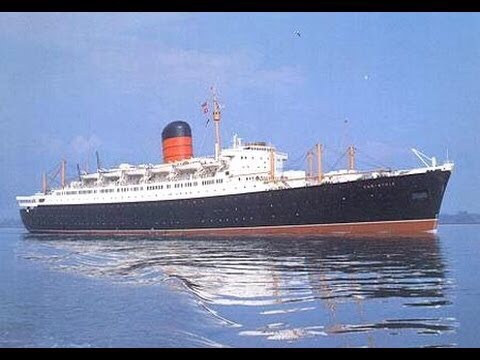
In 1957 father served as Chief Officer on QM, Caronia and Mauretania and after leave in early 1958 he moved to Queen Mary as her Chief Officer and he stayed on her until the end of October 1959.
On 30 October 1959 George E Smith became Captain George E Smith. He was appointed Master of the Alsatia, one of Cunard’s cargo ships.
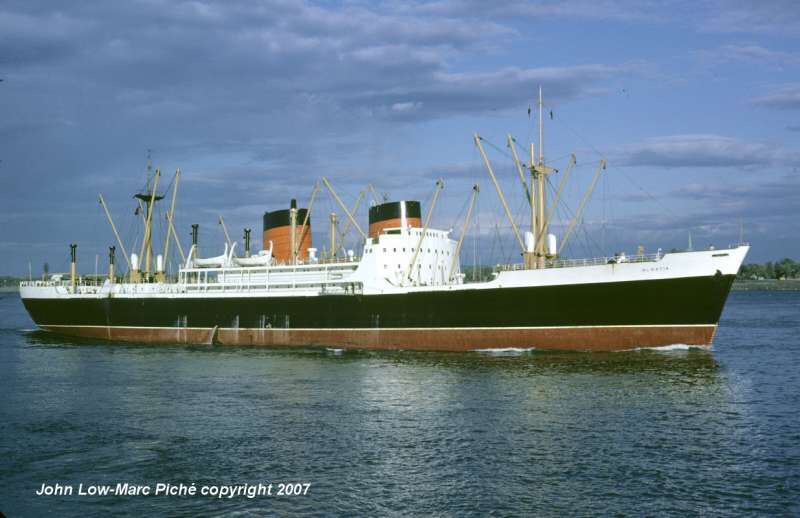
SS Alsatia was built for the Silver Line in 1948. The idea was that the ship would carry 12 passengers in style while the ship carried cargo around the world. Cunard bought her and her sister ship the Andria in 1951. They were both used for general cargo and the passenger accommodation was used by the officers – there were no passengers!
In early 1960 Captain George, after his initiation as the Master of a Cunard ship, returned to the passenger fleet on both Queens and the Mauretania as Staff Captain. He had another two spells as Captain of Alsatia and Arabia in 1961 and then in October 1962 he had his first command of a passenger ship, RMS Mauretania.
In early 1963 father returned to Queen Elizabeth and he remained with her all that year, until just before Christmas, when he transferred to the Caronia, the Green Goddess.
Caronia was having her Annual refit in Southampton and father enjoyed Christmas and New Year at home before the ship left on 6 January 1964 on a Caribbean cruise finishing in New York. Many of the passengers would have stayed aboard for the Great World Cruise
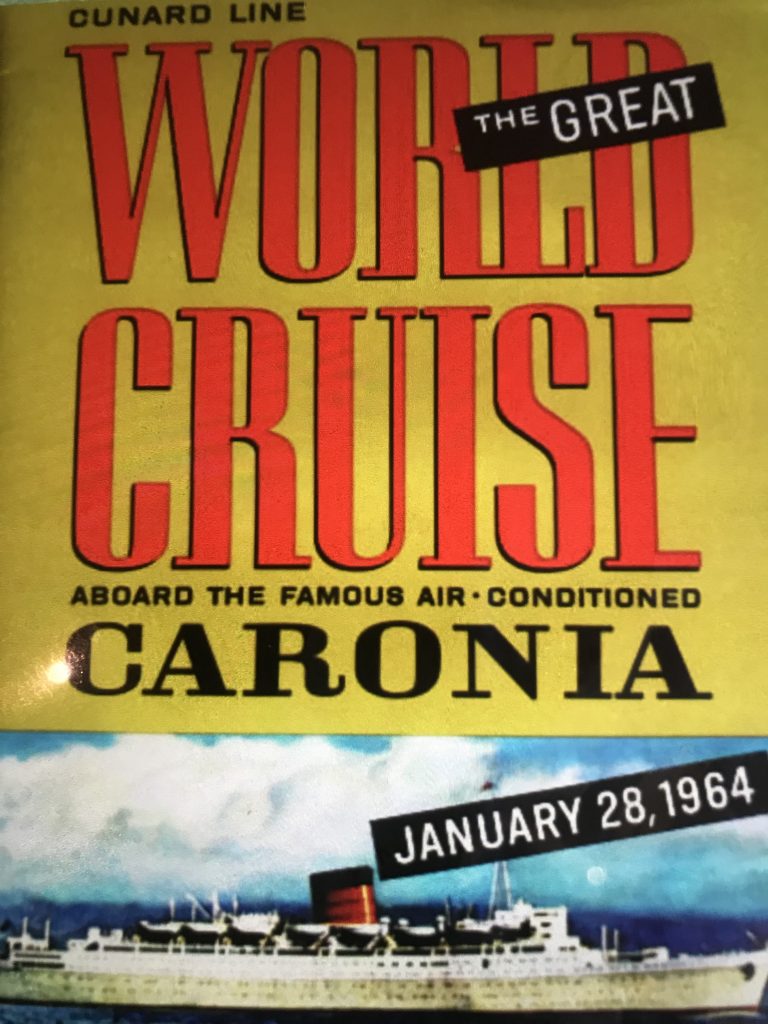
The voyage took Caronia south to Rio, then across the southern Atlantic to Capetown and Durban, across the Indian Ocean to Bombay and Colombo. After Singapore and Bangkok and Hong Kong she sailed north to Yokohama and then across to Honolulu and California and through the Panama Canal
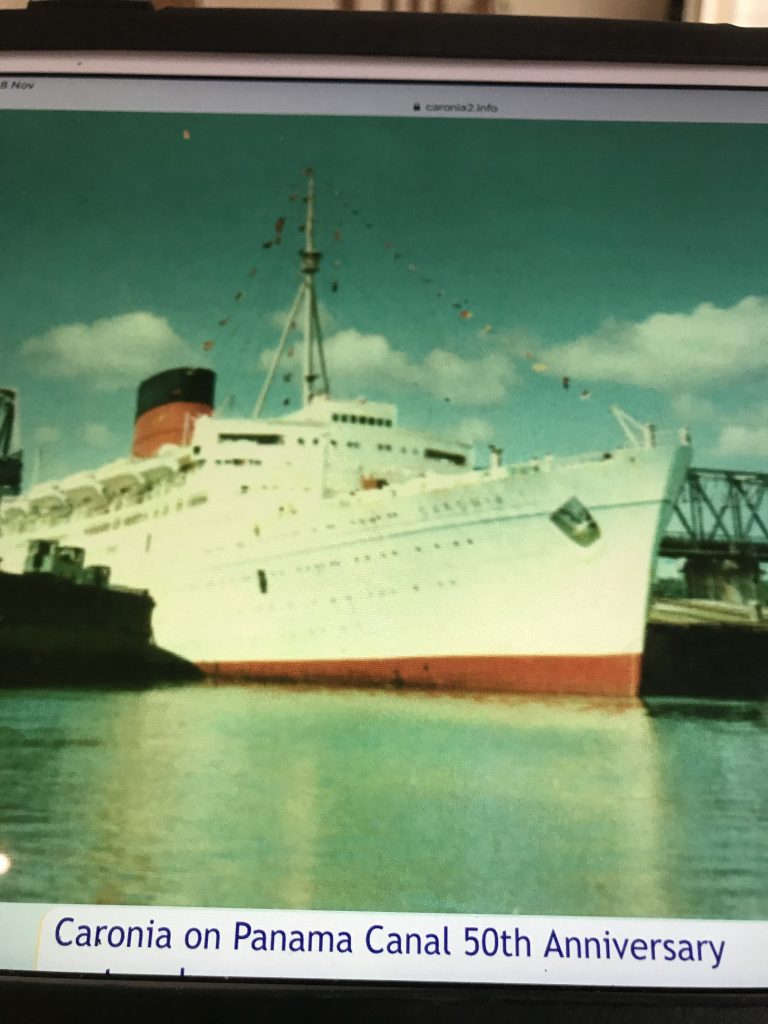
and then on to New York. After a few days Caronia set off on her Spring Mediterranean cruise
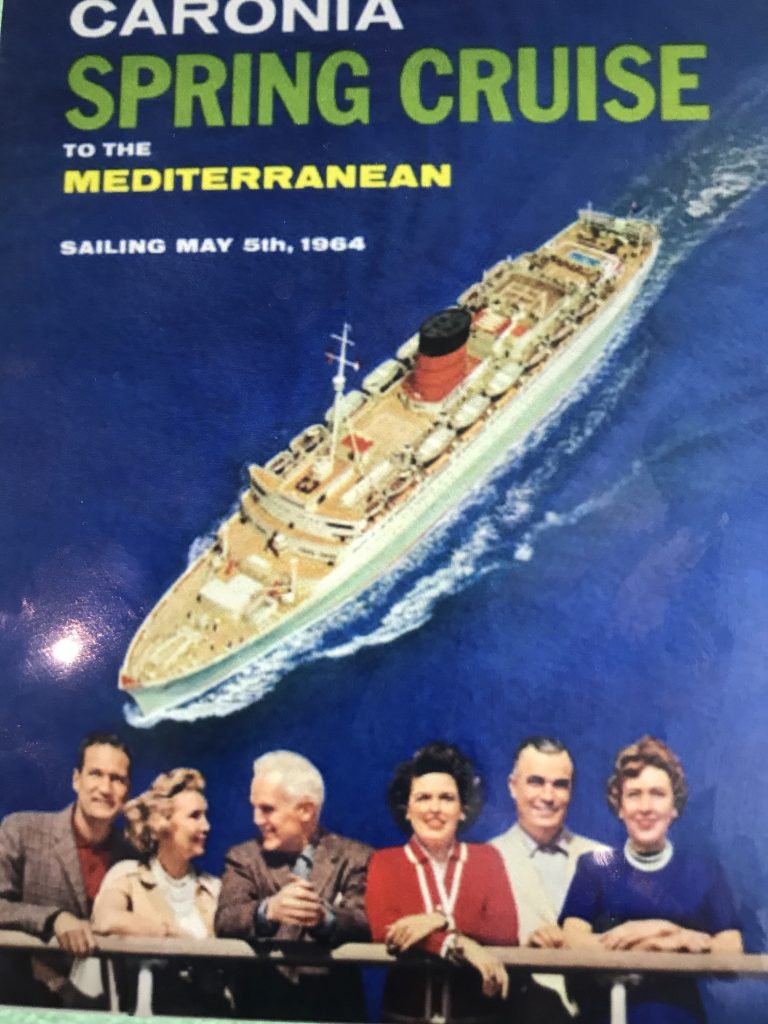
arriving in Southampton on 10 June 1964 when father went on leave.
Father had a month at home and then a voyage on Mauretania and one transatlantic on QE before Captaincy returned. The Andania was another of Cunard’s cargo fleet and he had a month on her before spells as Captain of the Cunard passenger fleet the Franconia, then her sister ship Saxonia, the Mauretania and the Ivernia. He then returned to Saxonia as her Master for 4 months and then spells on Queen Mary and Queen Elizabeth as Staff Captain.
After leave in mid June 1965 he returned to Queen Mary as Staff Captain. I have just realised that it must have been an organised move. I was off to the US for a working holiday in the summer vacation following my first year reading Law at University. I was entitled to travel at staff rates (£1 per day – a fiver for the trip!) and father must have persuaded someone to move him to QM for this voyage.
I didn’t see my father very much during the trip. He was working and I was enjoying myself. There were a large number of young American girls on board who had been doing the European tour with their parents.
I will report on this voyage and the 3 months in the US summer of 1965 later in the blog.
After working in Milwaukee for 6 weeks and then touring with 3 others around the USA for 10,000 miles in a 1957 Buick, it was back to New York and another wonderful voyage to Southampton on Queen Mary. Father by then had moved to the Mauretania. And for me it was back to year 2 of my law degree.
Later in 1965 father took command of Saxonia until March 1966 and then had spells on QM and QE as Staff Captain.
It was at this time in 1966 that Cunard found itself in financial difficulties. The National Seaman’s strike and legislation passed in the US that would prevent some of Cunard’s older ships from sailing with American passengers from their ports, meant that Cunard were losing massive sums every month. But the major problem was the development of air travel and the fact that people could fly the Atlantic in hours rather than spending 5 days on a Queen.
The Queen Elizabeth was not really suitable for cruising because of her size, but in 1967 she was deployed in that way. Father was aboard in the early part of 1967 as Staff Captain. The Captain was the Commodore of the fleet, Captain Geoffrey Marr. There had been a short cruise in the Caribbean in January 1967 and QE then set off on a long cruise from the US to the Mediterranean. It was fraught with problems because of poor weather. The Commodore was not well and towards the end of the voyage he slipped and fell on the deck, dislocating his ankle and fracturing a fibula and tibia.
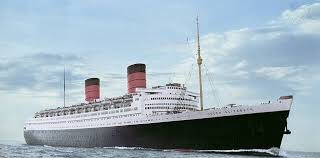
The Commodore travelled as a passenger for the rest of the voyage, handing command of Queen Elizabeth over to father. Captain George Smith had his first command of one of Cunard’s famous Queens. He finished the cruise as Captain, taking the ship back to New York and remained in command for the transatlantic back to Southampton.
It was at about this time that father was told that he was one of two Captains assigned to the new Cunarder being built on the Clyde. That must have been an enormous boost to my parents because in 1967 the Cunard board had decided that Queen Mary was to be retired and sold off at the end of 1967 and that Queen Elizabeth would suffer the same fate a year later.
It gave him a few more years at sea. Ships were being laid up and sold and senior officers were having to retire early. It was also a great honour to be part of QE2’s senior team.
After returning home as Captain of the original Queen Elizabeth, the flagship of the Cunard fleet, father moved to the Clyde where he ‘stood by’ the construction of what was to become the Queen Elizabeth 2 (QE2). This role ‘standing by’ the ship during construction was the same role that he had had with the Carinthia back in 1956.
Captain William Warwick was to be the first Captain and father the first Staff Captain. The new plan was that when the Captain was on leave the Staff Captain would take over the Captaincy, rather than bringing in a more Senior Captain from another ship.
During the construction of QE2 there were delays and a financial collapse of the Clydebank shipyards. They were losing millions on the QE2 construction. There were problems with the turbines when QE2 was first delivered and Cunard refused to accept her. Eventually the problems were overcome and a shakedown cruise to the Canaries was organised.
Prince Charles visited the ship before she left the Clyde for her trials
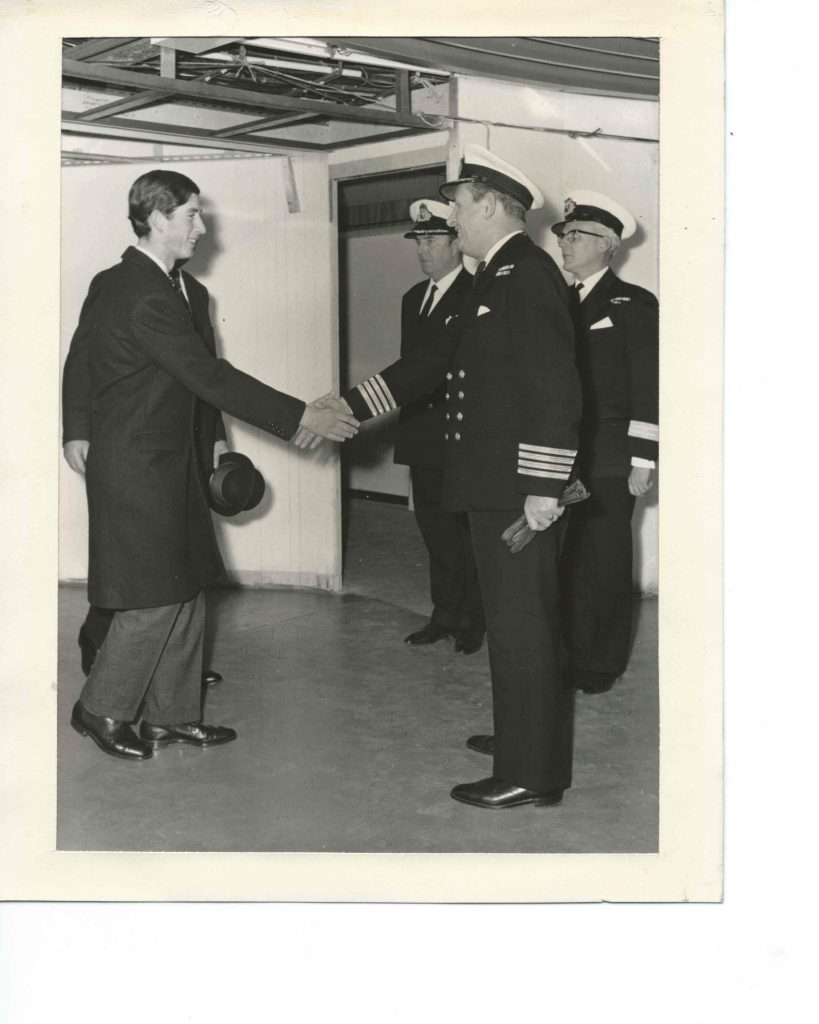
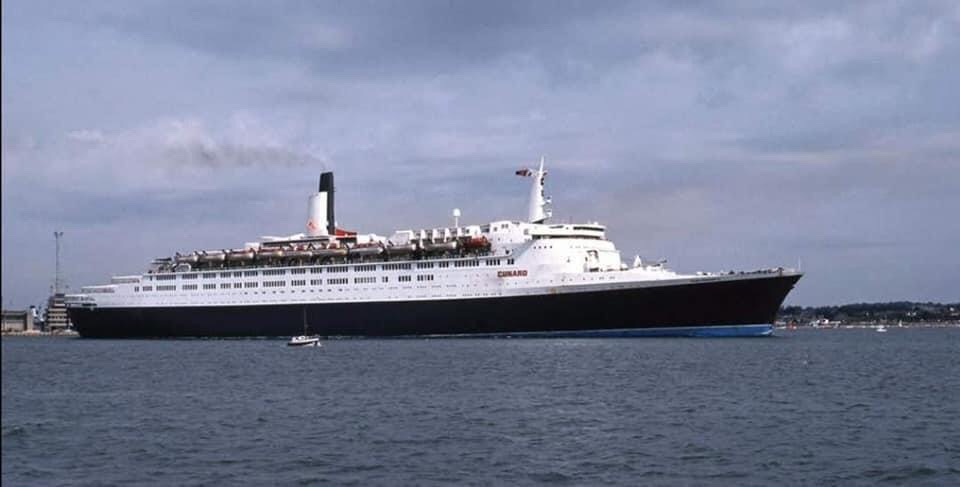
Spouses and dependant children of crew members were invited to join the shakedown cruise. I was a 23 year old articled clerk (these days they are called trainee solicitors) on £10 a week and was allowed to join the voyage. But we had to contribute by writing reports on cabins, checking whether or not they been finished properly. We had a schedule each day telling us where to eat and where to party. Cunard were checking that the crew could cope with pressure points. It was a great introduction for us to the QE2.
Jane and I did not sail on QE2 together until 2004 when we enjoyed a Norwegian cruise. Earlier that year we had managed to get a cabin on the Queen Mary 2 maiden voyage. Although Captain George Smith had died 20 years earlier I found that his name still carried considerable weight and we were entertained regally. It sold Jane on cruising.
We had a number of voyages from 2004 through to 2008 when we were lucky enough to be able to get a cabin on QE2’s final voyage to Dubai in November 2008.
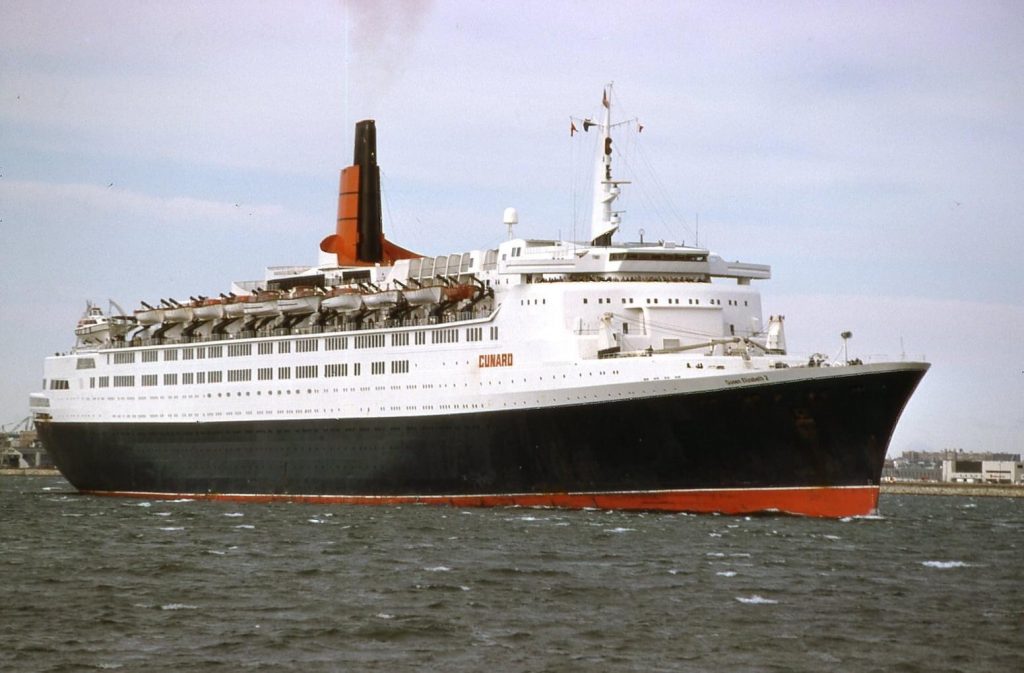
Sorry, I digressed. I must go back to the QE2 in those early days.
When the Queen boarded QE2 in Southampton before her maiden voyage, Captain Warwick was missing. He had found a pile of sawdust on the route the Queen was to take, so he found a dust pan and brush and cleaned it up himself, but that made him late. Father was there and did the hand shaking.
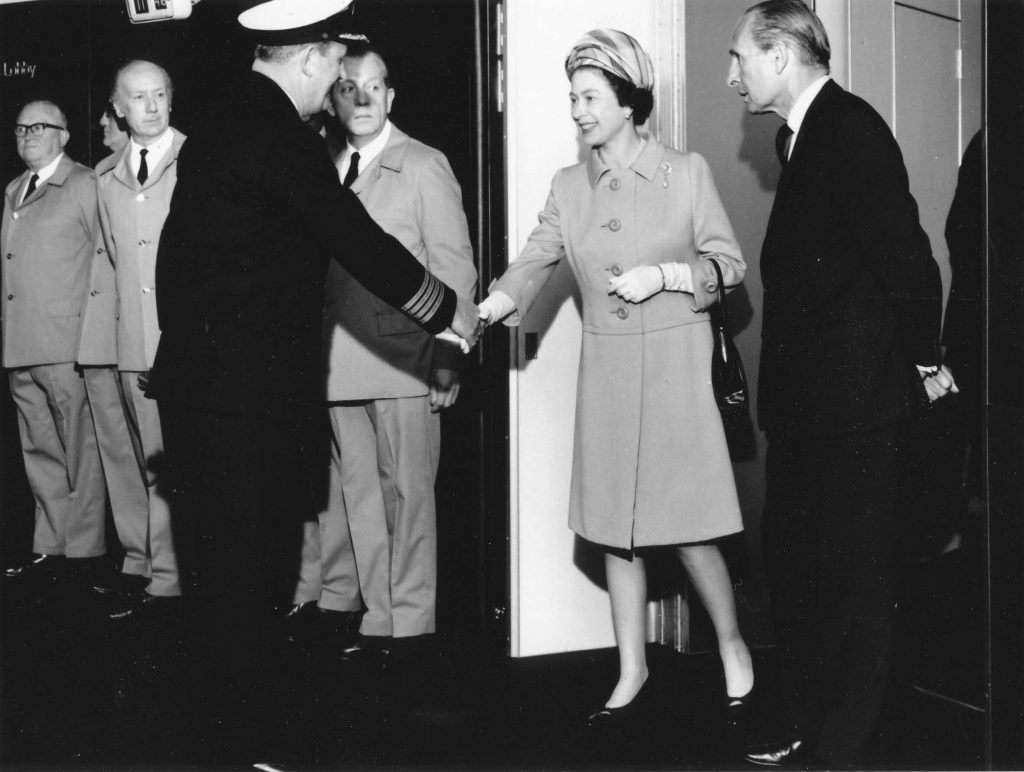
Fathers first voyage as Captain of QE2 was on 12 June 1969. Although father clearly loved the ship, after a time I think that he found it difficult to move down to the Staff Captain position when Bil Warwick returned from leave. Officers of fathers seniority had their commands in other ships in the Cunard fleet and (although this is pure conjecture on my part) I think he probably wanted to get back to commanding ‘his’ ship.
What happened was that he moved to the Franconia in mid 1970. He had been in command of her back in 1964. In 1970 she was based in New York and running down to Bermuda on a weekly basis. He loved the ship – Franconia would leave New York and 36 hours later would tie up on Front Street in Hamilton, Bermuda. The ship would be a hotel for the passengers for the next 3 days and she then sailed for 36 hours back to New York.
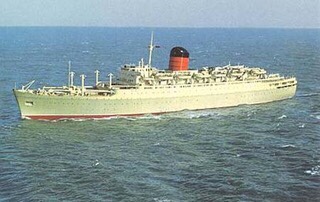
Mother, who for most of father’s career at sea, had not been allowed to sail with him, could now do so. She used to stay in Bermuda with friends and spend the 3 days with him when the Franconia was in Hamilton. From time to time she would do the round trip from Bermuda to NY and back down to Bermuda.
In the summer of 1971, father arranged for me to spend 2 weeks in Bermuda. He sent me an airline ticket to get me to Bermuda and he had arranged for me to return on a chartered Cunard crew flight 2 weeks later. He had taken leave out there and had rented a house in Warwick on Shore Road.
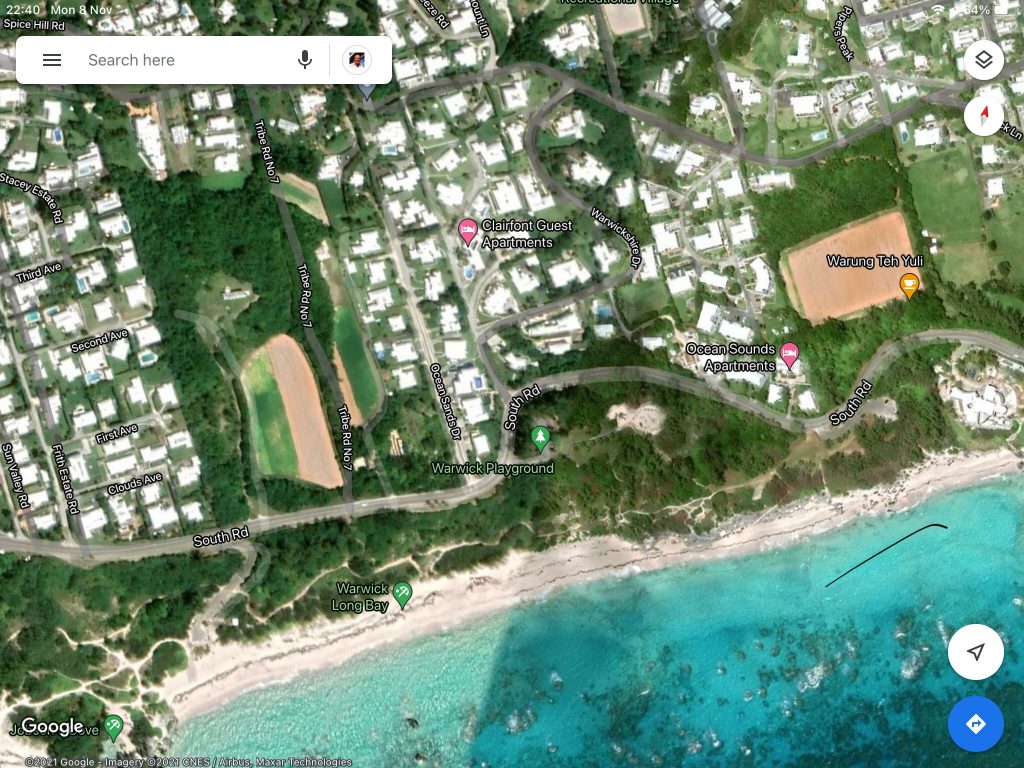
I had just qualified as a Solicitor and I had interviews in Bermuda with Law firms there. A life as a lawyer in Bermuda seemed attractive but after my return to Southampton and a job offer from Paris Smith and Randall brought me down to Earth.
Father remained as Captain of Franconia through to October 1971 when the ship was laid up in Southampton as was her sister ship Carmania.
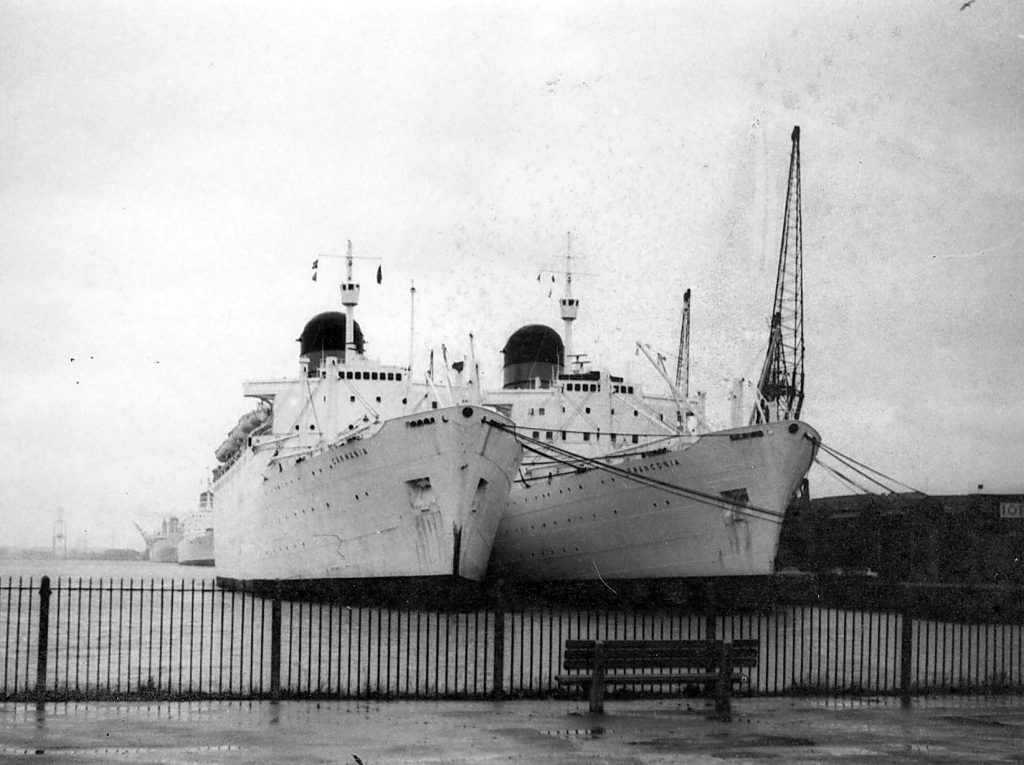
Eventually father sailed the two ships from Southampton to the River Fal, Cornwall where they were laid up until they were eventually sold.
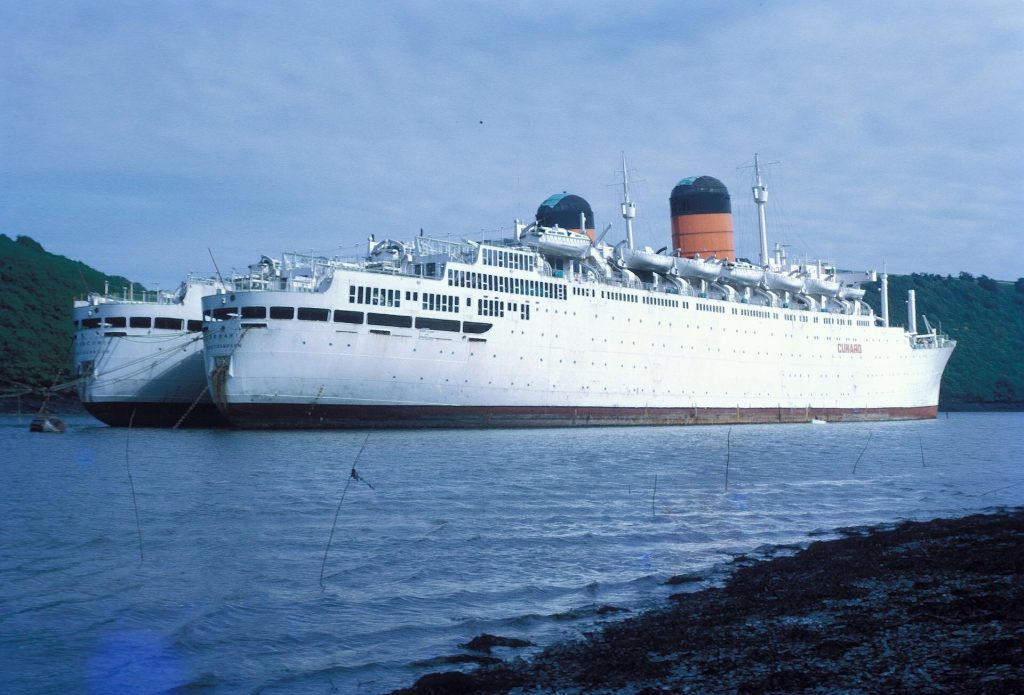
Captain George E Smith retired from Cunard in May 1972 and sadly died on 9 July 1984.
